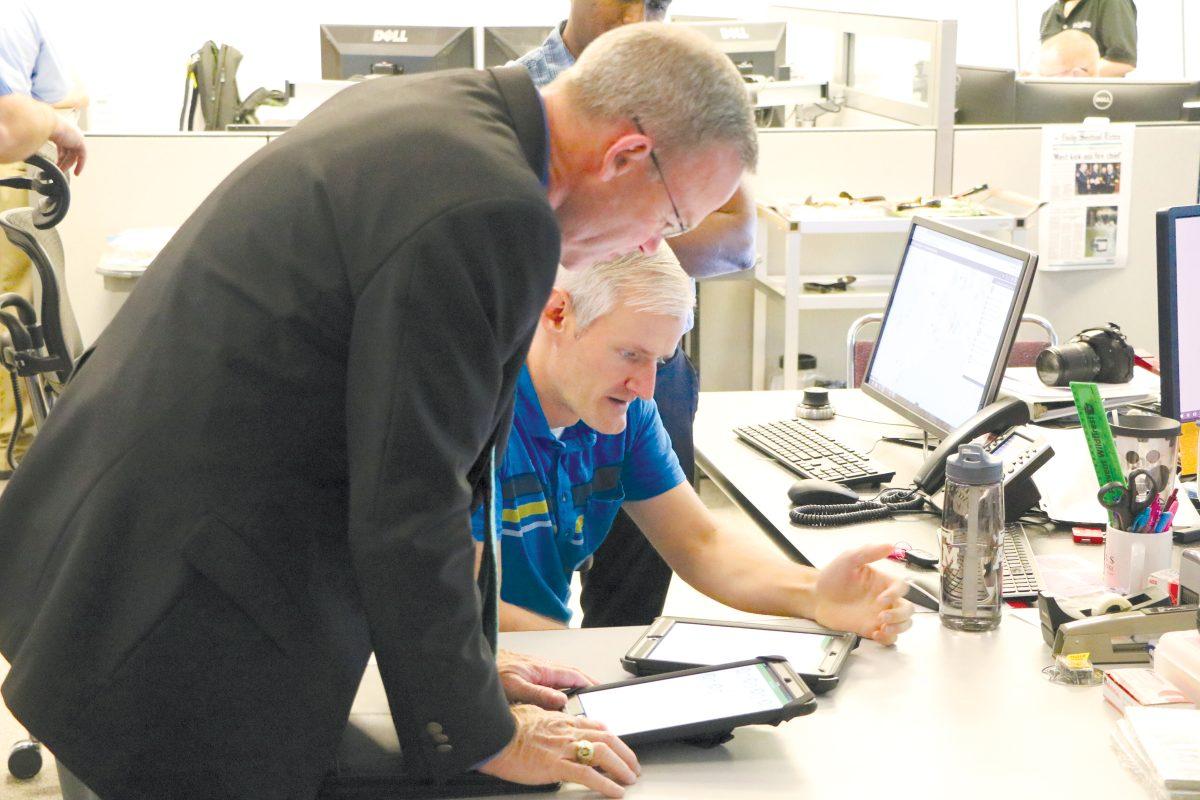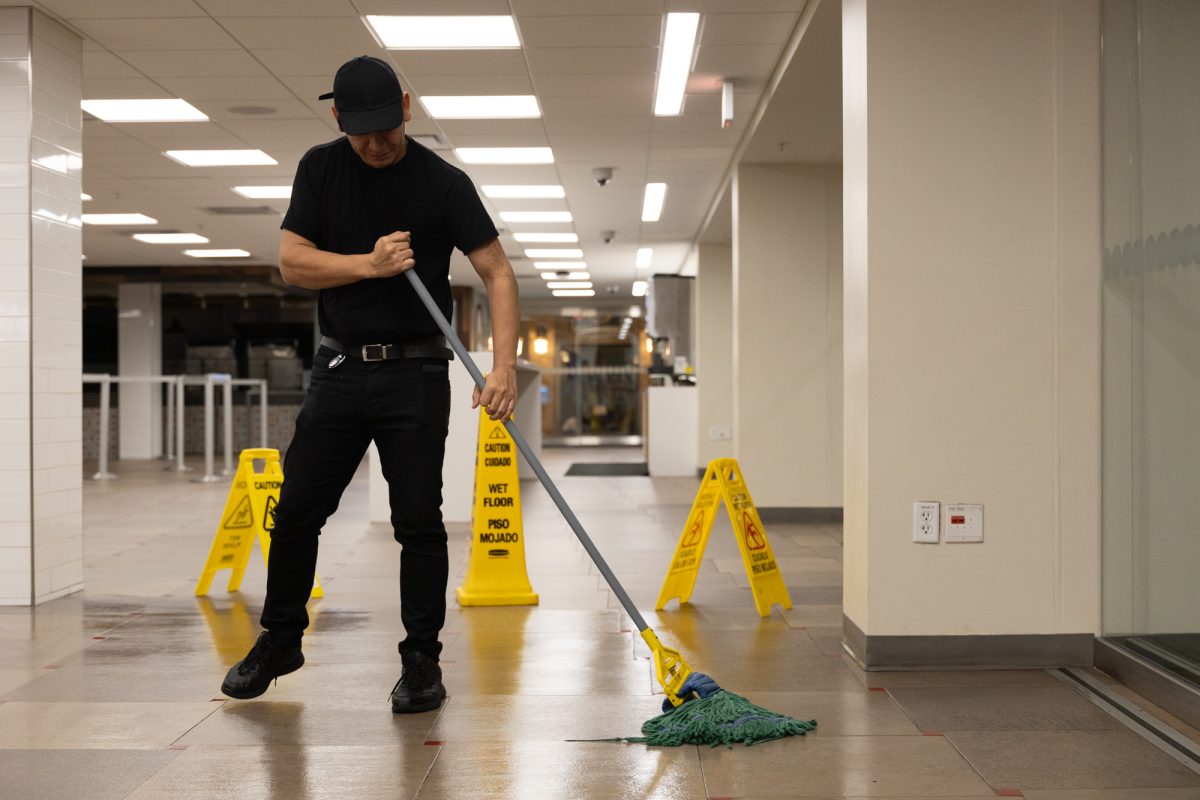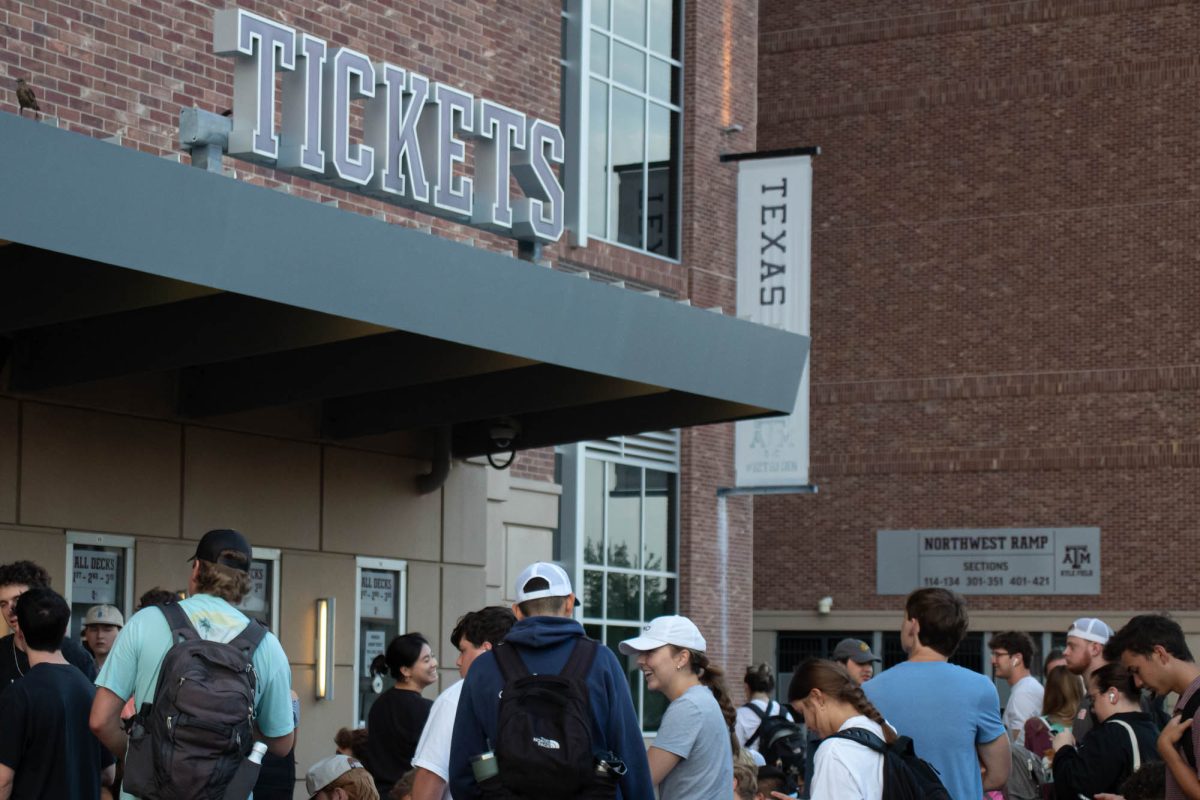In order to increase efficiency, the Governor’s Commission to Rebuild Texas is ensuring that all government officials are on the same page during the Hurricane Harvey recovery process by using a new software application developed by the Texas A&M Forest Service.
The Governor’s Commission to Rebuild Texas was established on Sept. 7 with the purpose of overseeing the response and relief efforts between state and local governments. The commission will be led by A&M System Chancellor John Sharp and is expected to last until the 2019 legislative session, according to Vice Chancellor of Marketing and Communications Laylan Copelin.
Copelin said over email that Sharp represented a large portion of the area affected by Hurricane Harvey when he served as Texas senator in 1982 and is accustomed to leading large organizations.
“Chancellor Sharp is employing resources from across the Texas A&M System including the AgriLife extension agents who live in the affected counties, the Texas Engineering Extension Service, many faculty experts, and so forth,” Copelin said. “Thanks to the governor, the chancellor can also draft staffers from across state government and other university systems.”
One of the resources from across the A&M system, the Texas A&M Forest System, is helping officials track the distribution of resources in areas affected by Harvey. According to communications specialist Phillip Truitt, one of the roles that the Texas A&M Forest Service is tasked with includes monitoring areas where resources such as water and food are kept. Truitt says the geospatial information system-based application helps track resources more efficiently.
“We needed a way to track those resources as they’re coming into the staging areas and out to the public in real time,” Truitt said. “The folks in the field can send that data back in real time and we can track the status of that request. During the hurricane, it helped track resources going to people that were affected.”
The Texas A&M Forest Service was mandated by the 34th Texas Legislature to respond to wildfires and disasters in the state. As Texas was the first state to establish its forestry agency under a land-grant college, TFS still assists other states around the country with wildfires and disasters.
“Whenever we developed the GIS program, we basically let Florida know that we had this program to track commodities and let them use it for free,” Truitt said. “It takes a team to respond to a disaster and we do that everyday. We work with our fellow states to help coordinate responses to disasters and wildfires.”
While the Texas A&M Forest Service continues to assist in the tracking of resources, Bryan Shaw, chairman of the Texas commission on environmental quality, said that water quality sampling is also something that is important in the recovery efforts of the hurricane.
“We’re keeping track of water and waste systems that were affected by Harvey and working swiftly to clean up those areas, especially in hazardous waste sites,” Shaw said. “Here at the Texas Commission on Environmental Quality, we want to make sure these systems are in the best condition so that these resources are safe for our citizens to use again.”
Governor’s Commission calls on A&M
September 26, 2017
Photo by PROVIDED
Texas A&M Forest Service employees are demonstrating new GIS software in College Station.
0
Donate to The Battalion
Your donation will support the student journalists of Texas A&M University - College Station. Your contribution will allow us to purchase equipment and cover our annual website hosting costs.
More to Discover









